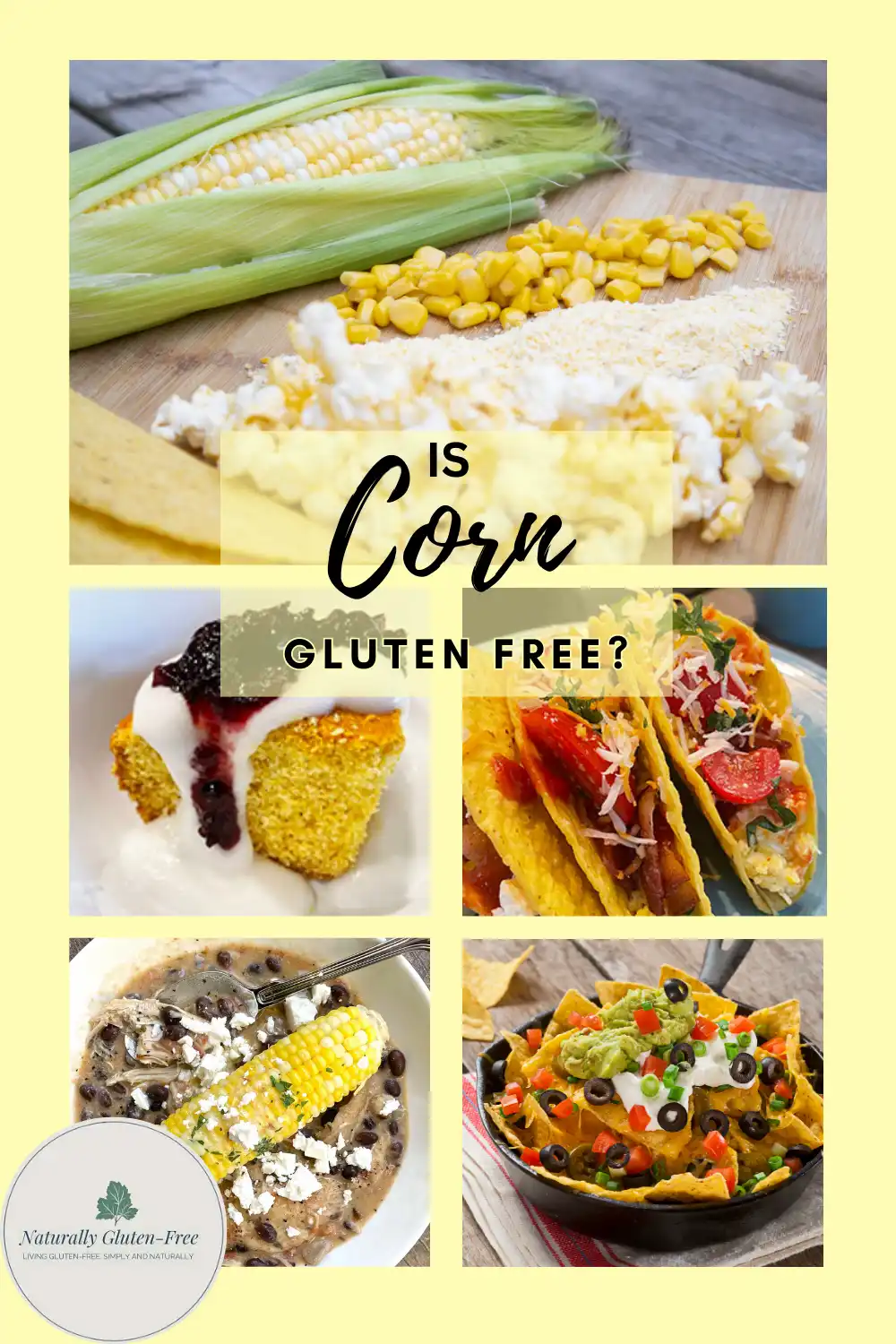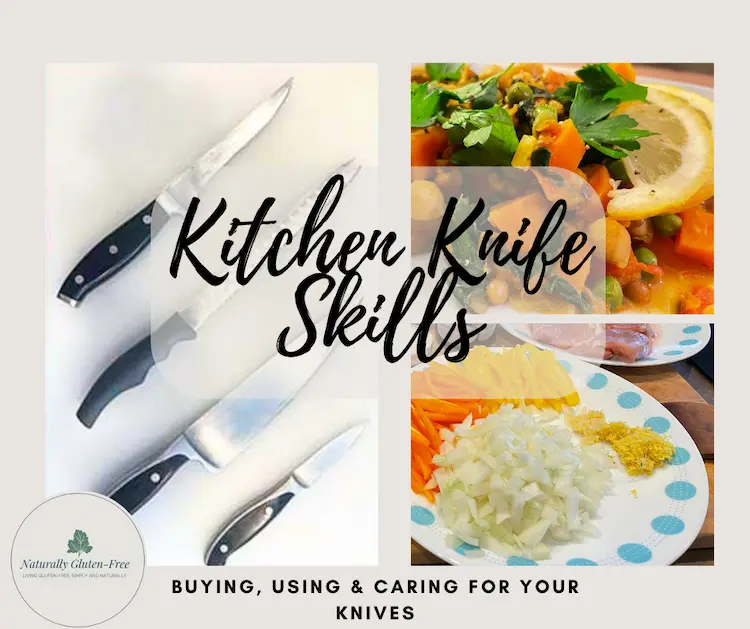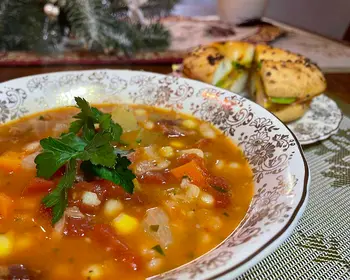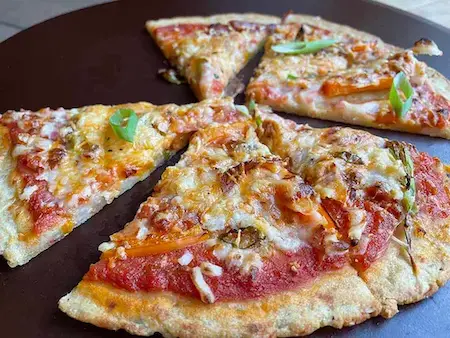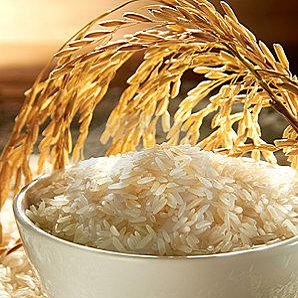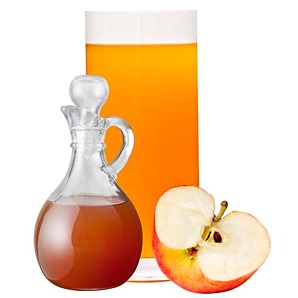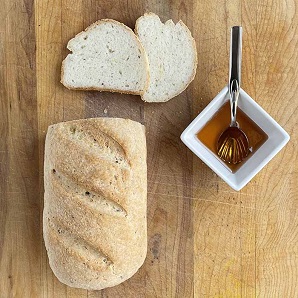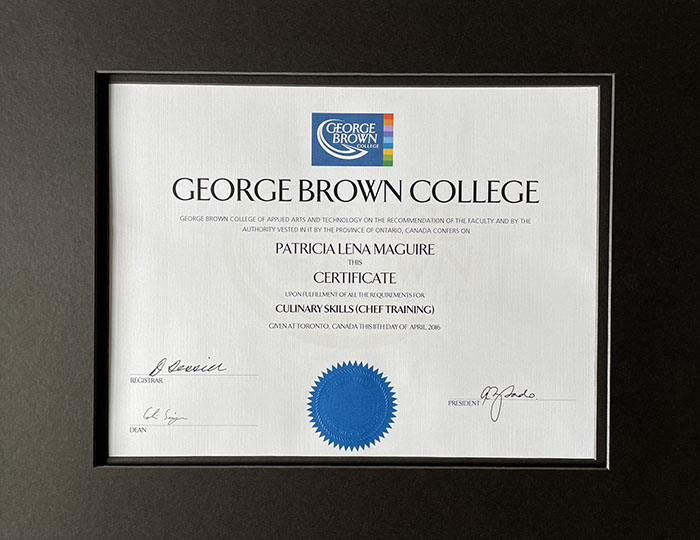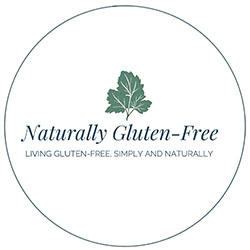- Home
- Gluten Free Grains
- Gluten Free Corn
Is Corn Gluten Free? How to Enjoy Corn and Corn Products Safely
Corn is everywhere! If you have celiac disease or gluten intolerance, you’re likely wondering, "Is corn gluten free? Is corn safe for me to eat?"
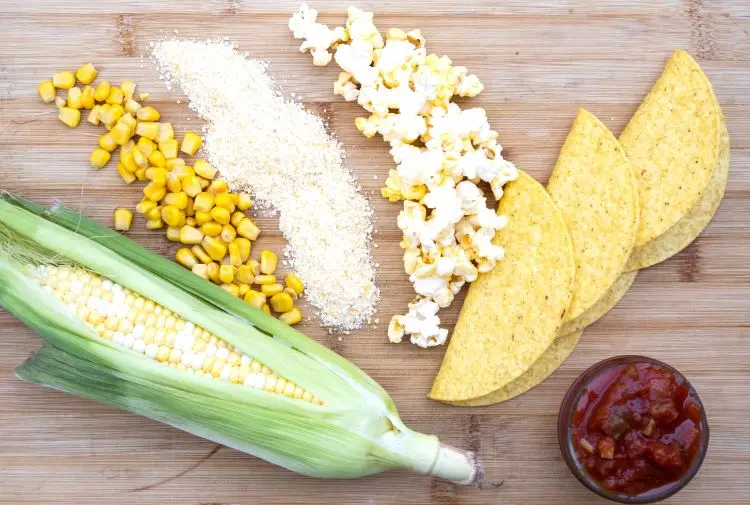
Like many things with this crazy condition we have, answers that should be simple are more complicated. And so it is with corn. Let’s explore.
Corn, as a Grain, Is Naturally Gluten Free
Plain corn itself doesn't contain gluten. Corn on the cob, kernel corn (canned or frozen), creamed corn, and popcorn are all gluten free. Of course, always check labels to ensure no gluten ingredients have been added.
Yet, real-life eating often involves packaged products.
Corn tortillas, cornflakes, cornbread, cornmeal, and corn chips, are a few that come to mind. Corn derivatives like cornstarch, high fructose corn syrup, corn maltodextrin, and corn oil are common ingredients in products you might not think contain corn. There are even corn-based alcohols like bourbon and some vodkas.
To make informed decisions, we need to know more about how these products are labeled and processed.
Pin for Later
Reading Labels – How to Know if Corn Products are Gluten Free
The problem with corn products is the risk of cross-contamination during processing. If corn flour or cornmeal is produced in a facility that handles gluten-containing products, contamination is a risk.

In 2012, the Canadian Food Inspection Agency found that 16% of tested corn flour samples contained more than 20 ppm of gluten. This exceeds the safe threshold for celiac patients and the limit for labeling a product as gluten free.1
Corn Meal and Corn Flour
Celiac Canada recommends that if cornmeal or corn flour is listed as the first or second ingredient on a product’s label, the product should also have a gluten free claim if it is safe for people with celiac. So look for a gluten free label on products like corn tortillas, tortilla chips or corn chips where cornmeal or corn flour is predominant.2
Cornstarch in Gluten Free Baking
Do you use cornstarch in gluten free baking or as a thickener in gluten free sauces? I have great news - cornstarch is gluten free. It is highly processed, and the risk of cross-contamination is low. Also, cornstarch is used in small quantities as an ingredient, further lowering the risk. You don’t need to look for a gluten free label on cornstarch.2
Be careful of cross-contamination in the kitchen though. If you’ve used cornstarch in recipes with wheat flour, have you dipped your measuring spoon into the cornstarch without cleaning it first? Is your container of cornstarch contaminated?
Corn Gluten
This one confuses people for obvious reasons. The word “gluten” is right there. That makes me nervous, how about you?
Despite its name, corn gluten is safe for people with celiac disease. It does not contain the harmful gluten proteins found in wheat, barley, and rye. Corn gluten is mostly used as an herbicide in gardening and lawn care - it's great for getting rid of dandelions. It is also found in animal feed and in hydrolyzed vegetable protein, a common food additive.3
What if You React to Corn?
Even though corn is gluten free, some people report difficulties with corn. Once we’ve ruled out cross-contamination, there are other possible reasons to explore.
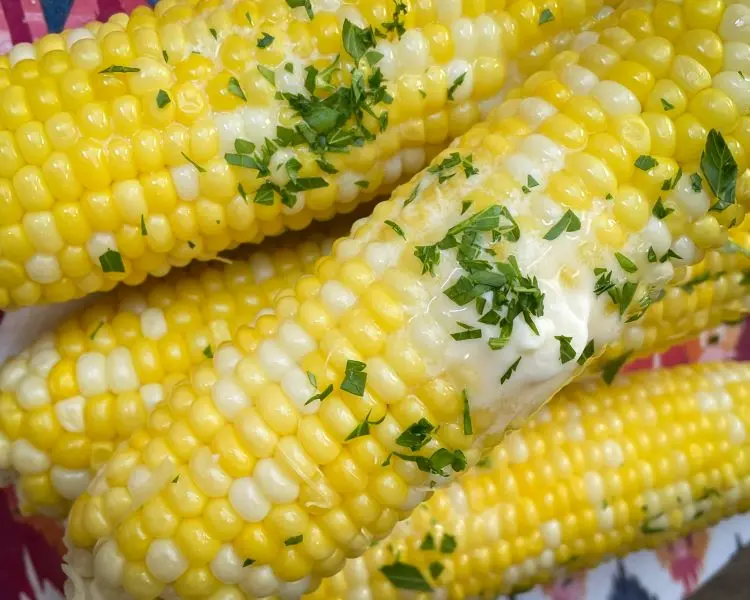
Corn Allergy or Intolerance
It is common for people with celiac disease to have other food intolerances. The reasons are complicated, and research is ongoing. Dr. Alessio Fasano in his book Gut Feelings discusses the role of the microbiome and “leaky gut” in food intolerance. This is something to keep an eye on as science progresses.
Irritable Bowel Syndrome (IBS)
Many people with celiac disease also have IBS and they often report that corn causes bloating and cramps.
The Myth of Cross Reactivity
A 2013 study explored the potential "Cross-Reaction between Gliadin and Different Food and Tissue Antigens." The idea was that the immune system might mistake proteins in foods like milk, yeast, millet, corn, rice, and oats for gluten, triggering an autoimmune reaction in people with celiac disease. However, Gluten Free Watchdog reviewed the study and found it poorly conducted with unreliable results. There is no scientific proof of cross-reactivity between gluten and other proteins.4
Corn Can Be Hard to Digest
Have you ever noticed the day after eating corn that it seems to go through you completely unscathed? Corn is high in cellulose, which the body can't digest. As it passes through your system undigested, it can cause bloating and cramps.5
Despite these concerns, many people with celiac disease can safely enjoy corn and corn products. The key is to listen to your body and be vigilant about processing and labelling.
Is Corn Good for You?
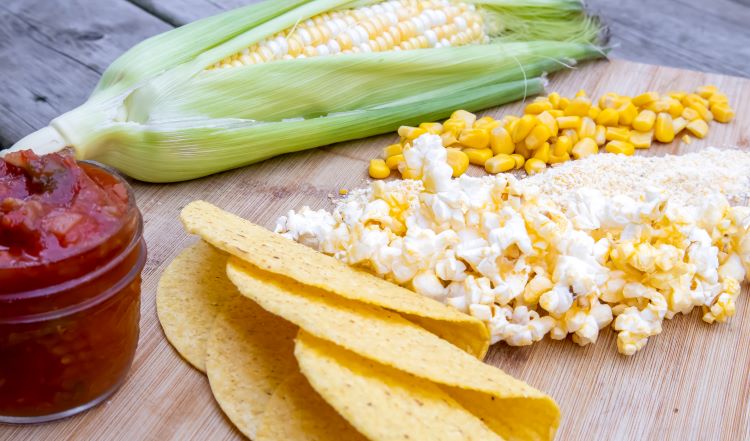
Nutrients in Corn
Corn is rich in essential nutrients like vitamin B6, niacin, and magnesium, which play key roles in energy metabolism and overall health. Corn also provides antioxidants like lutein and zeaxanthin, beneficial for eye health. These compounds help protect against oxidative stress and can reduce the risk of age-related eye conditions. Whole corn and corn products can contribute to your fiber intake, which helps maintain a healthy gut and manage blood sugar levels.
However, corn is high in carbohydrates and calories. So if you are following a keto or low-carb diet, or trying to manage your calorie intake, you might want to avoid it.
Also, corn appears in many highly processed or "junk" foods that don't qualify as naturally gluten free. Treats are fine, but I suggest to keep the processed junk food to a minimum.
So yes, corn can be a valuable part of a well-rounded gluten free diet. Moderation and variety are key.6
Treating Corn with Lime to Release Nutrients
The process called nixtamalization was developed by ancient Mesoamerican tribes. It involves boiling and soaking corn in an alkaline solution, usually lime water. This changes the chemical makeup of several nutrients, including niacin, making them more available to the human body. Without this process, those who rely on corn as a staple might suffer nutrient deficiencies.
The treated corn, called hominy or nixtamal, can be used in traditional soups, made into masa dough, or dried and ground into masa harina flour. Masa and masa harina are used to make tortillas and tamales.7
How to Get Corn into Your Diet
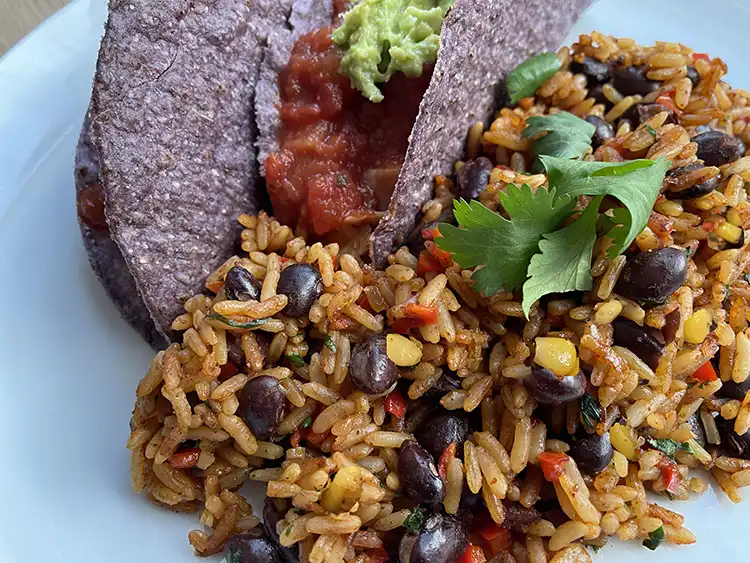 Blue Corn Tacos with Mexican Rice
Blue Corn Tacos with Mexican RiceCorn is a staple of Mexican and Central American cuisines so think of dishes from these regions. Try adding corn kernels to soups, stews, or chili for a pop of color. Mexican rice with corn and beans is a vibrant and hearty side or a meal on its own. Here are a few more ideas:
- Corn-on-the-cob with salt and butter is a simple, naturally gluten free summer barbecue favorite.
- Polenta is another fantastic option. You can cook it creamy, bake or grill it into slices, and use it as a versatile side dish or savory base for toppings.
- A quick stir-fry featuring corn kernels, bell peppers, and onions can be a colorful and nutritious side dish or add a bit of protein to make it a main course.
- If you like to bake, try cornbread, corn muffins, or even a crispy cornmeal crust for gluten free pizza.
Is Popcorn Gluten Free?
Yes! Popcorn is a delightful snack that checks all the boxes – it's gluten free, easy to prepare, and customizable with your favorite seasonings. Plus, it's high in gut-healthy fiber.
Yet, as with many naturally gluten free foods, what you add to your popcorn could pose a risk. Check labels on any seasonings to ensure they are gluten free. If you’re making microwave popcorn, check the label for gluten ingredients. Movie theater popcorn is gluten free but avoid any shake-on seasonings unless you can check the ingredients.
Conclusion
Despite the potential risks, those of us with celiac disease or gluten intolerance can safely enjoy corn and its products. The key is to be vigilant, read labels carefully, and listen to your body.
Corn, when properly sourced and prepared, can be a nutritious and delicious part of a gluten free diet, offering essential vitamins, fiber, and antioxidants.
So, the next time you are wondering "is corn gluten fee?" rest assured that with awareness and attention to detail, you can enjoy the diverse and vibrant possibilities that corn brings to your meals.
Sources:
1. Koerner TB;Cleroux C;Poirier C;Cantin I;La Vieille S;Hayward S;Dubois S; (n.d.). Gluten contamination of naturally gluten-free flours and starches used by Canadians with celiac disease. Food additives & contaminants. Part A, Chemistry, analysis, control, exposure & risk assessment. https://pubmed.ncbi.nlm.nih.gov/24124879/
2. Celiac Canada. (2022, December). Canadian Celiac Association Position Statement on the ... Celiac Canada. https://www.celiac.ca/wp-content/uploads/2022/12/Corn-Statement-Dec-5-2022-clean.pdf
3. Wikimedia Foundation. (2024, June 29). Corn gluten meal. Wikipedia. https://en.wikipedia.org/wiki/Corn_gluten_meal
4. Thompson, T. (2019, September 18). Gluten and cross-reactivity. Gluten Free Watchdog. https://www.glutenfreewatchdog.org/news/gluten-and-cross-reactivity/#:~:text=For%20the%20past%20several%20years,corn%2C%20millet%2C%20and%20rice.
5. Capili, B., Anastasi, J. K., & Chang, M. (2016, May). Addressing the role of food in irritable bowel syndrome symptom management. The journal for nurse practitioners : JNP. https://www.ncbi.nlm.nih.gov/pmc/articles/PMC4944381/
6. Streit, L. (2023, April 21). Is corn good for you? nutrition facts and more. Healthline. https://www.healthline.com/nutrition/is-corn-good-for-you#benefits
7. Wikimedia Foundation. (2024b, July 16). Nixtamalization. Wikipedia. https://en.wikipedia.org/wiki/Nixtamalization
